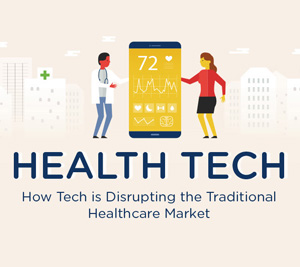How Technology Will Transform Patient Care in Rural Areas

Over the last several decades, technology in the healthcare space has steadily been evolving. In recent years, however, this evolution has seemingly exploded with incredible technology now enabling medical professionals to aid patients in profound ways.

One demographic of American patients that is in dire need of increased healthcare resources is those in rural areas. Gaining perspective on how new technology in healthcare can help provide rural residents with the care they need can give one a more nuanced perspective on the way technology is impacting healthcare.
Here is how technology will transform patient care in rural areas.
Telehealth is Making Rural Healthcare More Accessible
In rural areas, there are a number of barriers standing between residents and healthcare. One of the most difficult challenges is a lack of medical facilities and medical professionals located in rural areas. Oftentimes, this means that rural residents will have to travel for several hours just to see a doctor.
As one can imagine, the resources needed to build new medical facilities are immense. To make matters worse, not many medical professionals are keen on living in rural areas, and it could take years to build new facilities even if the proper funds were secured.
Thankfully, telehealth has presented itself as a potent and effective solution that can help solve the issue of a lack of rural healthcare facilities. Essentially, telehealth is the practice of providing healthcare through the use of electronic technology.
In its most common forms, telehealth involves patients communicating with medical professionals remotely through phone calls or video calls. This alleviates some of the need for rural residents to travel significant distances to see medical professionals.
Unfortunately, telehealth is not yet at an advanced stage that completely dissolves the need for rural residents to see their medical providers in person. However, as technology evolves and new ways of engaging in telehealth become normalized, this may one day change.
Hopefully, new technology will be able to solve the problem of remote healthcare and provide rural residents with a way to receive robust care and experience better health outcomes.
Robots Can Help Medical Professionals Perform Procedures More Successfully
As has been noted, many rural areas across America lack key medical resources. Even when there are clinics and medical facilities in these areas, they may not have the proper equipment and professionals to perform specific types of procedures. For rural residents, this means having no other option than having to travel significant distances to have procedures performed.
Robots, however, are beginning to play a more important role in healthcare. What may have once seemed like an idea out of a science fiction movie has now started to become reality as robots are helping medical professionals perform surgeries and procedures.
For rural residents, this means that more types of procedures may be offered in local clinics as a result of an influx of new medical robots. This can help medical providers ensure that they’re providing amazing care to rural residents in need of surgery and procedures. As such, the next decade will likely see a great boost in rural healthcare offerings as more healthcare organizations take advantage of medical robots that can help perform procedures.
Remote Patient Monitoring is Providing Rural Residents with More Convenience
Traditionally, treating patients remotely posed some key challenges for medical providers. Specifically, medical providers had to trust that patients were being consistent in their self-care and were unable to know if patient vitals were off in real-time. This could often result in poor health outcomes for patients who weren’t stringent in their self-care duties.
Today, however, technology has evolved to the point where medical professionals have the opportunity to monitor patients remotely in real-time. This form of technology has impacted nursing and other medical fields profoundly by making remote care a more viable option.
For rural residents, this can have a number of benefits. Rather than noticing declines in health when it’s too late, medical professionals can notify rural residents immediately if their vitals become irregular or worrisome.
One technology that is helping to make this possible is a form of AI called machine learning. Essentially, this form of AI learns over time by studying masses of patient data. As a result, machines powered by machine learning software can alert medical providers if a rural resident’s health is taking a negative turn.
As time goes on, many are hopeful that technology will continue to make remote monitoring of patients more effective. In this way, technology can help rural residents experience better health outcomes with increased regularity despite a lack of rural medical facilities.
Technology is Helping Rural Residents Achieve Optimal Health Outcomes
While rural residents have faced a number of healthcare obstacles over the last decades, technology is presenting itself as a powerful tool to overcome these challenges. From making remote monitoring more effective to utilizing robots to help with medical procedures, medical technology is transforming the way that rural residents receive care.
As time goes on, many are hopeful that technology in healthcare will continue to evolve and provide rural residents with more amazing care options that can potentially transform their lives.









Leave a Reply
Want to join the discussion?Feel free to contribute!